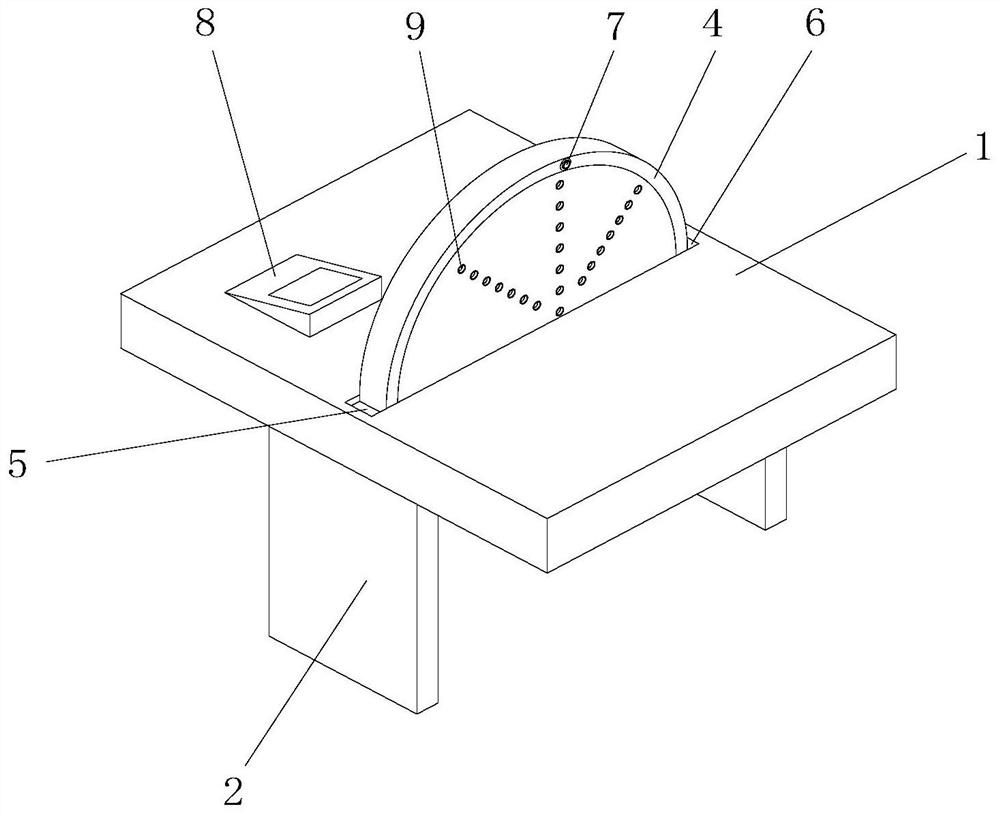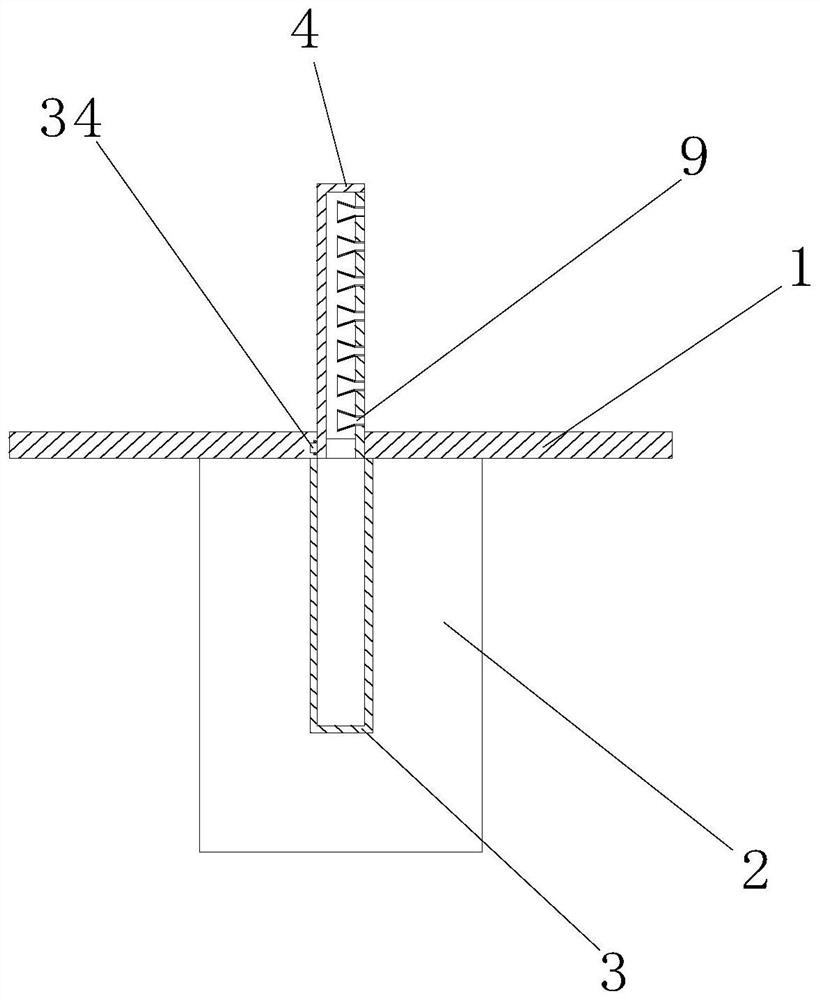Examination table for psychiatry department
A psychiatric and diagnostic technology, applied in the medical field, can solve problems such as lack of protective measures, loose masks, falling off, etc., and achieve the effect of reducing the risk of disease transmission to doctors and avoiding discomfort
- Summary
- Abstract
- Description
- Claims
- Application Information
AI Technical Summary
Problems solved by technology
Method used
Image
Examples
Embodiment 1
[0043] Example 1: Please refer to Figure 1-4 , the present invention proposes a psychiatric examination table, comprising a table board 1 and a table leg 2, the number of the table legs 2 is two and fixedly connected to the front and rear bottom surfaces of the table board 1, and the middle part of the bottom surface of the table board 1 is fixedly connected There is a sleeve 3. The shape of the sleeve 3 is a semi-cylindrical and the top surface is hollowed out. The position corresponding to the sleeve 3 on the top surface of the table board 1 is hollowed out. A rotating rod B34 is sleeved inside, and the right end of the rotating rod B34 is fixedly connected with a baffle 4. The shape of the baffle 4 is a semi-cylindrical body and its size matches the inner wall of the sleeve 3. The bottom end of the back side of the baffle 4 is fixedly connected. There is a board 6, and the top surface of the table board 1 is provided with slots 5 on the front and rear sides of the baffle 4...
Embodiment 2
[0045] Example 2: Please refer to Figure 5-9 , on the basis of Embodiment 1, the bottom surface of the baffle plate 4 is hollowed out, the bottom surface of the sleeve 3 is fixedly connected with a connecting column 11, the top surface of the connecting column 11 is hollowed out and communicates with the inside of the sleeve 3, and the two connecting columns 11 The sides are fixedly connected and communicated with connecting pipes 12, and the ends of the two connecting pipes 12 away from the connecting column 11 are fixedly connected with an air-separating column 14, and the bottom surface of the air-separating column 14 is provided with a circular platform hole, and the side of the circular platform hole with a small diameter faces upwards. , the inner wall of the air separation column 14 is fixedly connected with a spring A16, the top of the spring A16 is fixedly connected with a round platen 15, the circular platen 15 fits with the inner wall of the air separation column 14...
Embodiment 3
[0050] Example 3: Please refer to Figure 10-12 , on the basis of Embodiment 2, a protective cover 35 is sleeved on the outer wall of the top surface of the table 1, and the protective cover 35 is made of rubber material. Through the setting of the protective cover 35, the ability of the protective cover 35 to generate deformation is used to protect the patient and the table. The contact between the boards 1 plays a buffering effect, and prevents the patient from impacting the table board 1 to cause damage to the patient himself and the table board 1 when a patient such as mania is onset.
[0051] The side of protective cover 35 corresponding to table board 1 is hollowed out, and the right side of the inner wall of table board 1 is provided with movable groove 36, and the inner wall of movable groove 36 is fixedly installed with rotating bearing, and the inner ring of rotating bearing is fixedly connected with rotating rod C37, and rotating rod C37 Fixedly connected with the b...
PUM
 Login to View More
Login to View More Abstract
Description
Claims
Application Information
 Login to View More
Login to View More - Generate Ideas
- Intellectual Property
- Life Sciences
- Materials
- Tech Scout
- Unparalleled Data Quality
- Higher Quality Content
- 60% Fewer Hallucinations
Browse by: Latest US Patents, China's latest patents, Technical Efficacy Thesaurus, Application Domain, Technology Topic, Popular Technical Reports.
© 2025 PatSnap. All rights reserved.Legal|Privacy policy|Modern Slavery Act Transparency Statement|Sitemap|About US| Contact US: help@patsnap.com



